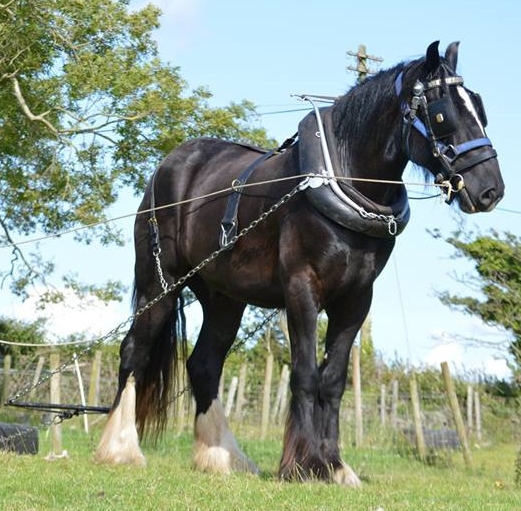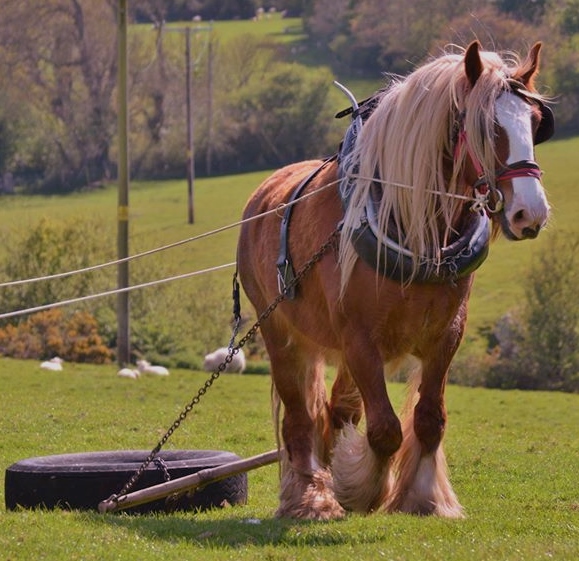What is a Shire Horse?
The Shire Horse was originally a result of breeding between our own native smaller breeds and heavy breeds from Europe; mostly Holland, Germany and Belgium. The intent was to create a ‘War Horse’ to carry our knights into battle.

The ‘War Horses’ were smaller than the Shires of today, but over the years selective breeding has created the tall magnificent horses you now see gracing fields around the world.
A gentle giant…
Traditional Shire Horses were built like tanks; large, compact and very strong. They had a broad chest providing extra room for their heart and lungs, their legs were short in comparison to other breeds, and typically no longer then the depth of their body from the wither to their girth. Hairy legs protected their legs for injury and lastly, but most importantly, they were breed for their temperament; gentle, kind, patient and willingness to work. Shire horses are commonly referred to as ‘The Gentle Giants’.
When horse power really meant horse power!
The Shires are immensely strong and before their arrival oxen used to be the main source of power on our farms, but soon the Shires took their place as the faster and more intelligent animal. Roads became common place, travel became easier, and strong horses were needed to transport goods from town to town and along the canals.

Cometh the hour cometh the horse….
Britain was at war again in the 19th & 20th centuries, our armies had cannons and the Shire became a War horse once again. The conditions were hard for both man and beast. The horses were treated with great respect and anyone found ill-treating a horse would be tied to the wheels of the wagons and flogged. Not only were they used to transport weapons but also to transport the dead and injured.
Shires were common place up until the industrial revolution, but the birth of the steam engine meant the numbers of Shires fell each year; from over a million to just a few thousand.
A few good men…
Resisting technology a few men refused to change their ways and because of their stubbornness the Shire Horse is still here to tell the tale. The knowledge of working these magnificent horses was passed down through the generations. Small societies, like the North Wales Shire Horse Society, were set up all over the country and the founders of these societies, and the men and women who continued breeding the Shire, are directly responsible for their revival.
The Shire today…
Thanks to the horsemen of yesteryear and those who have listened to them you can still see our magnificent horses work the fields, and ploughing matches now again take place across the British Isles.
There is increasing interest in riding the Shire and it is no longer unusual to see them riding alongside a hunt, or even in a dressage class.
Their versatility is proven. And I love them!